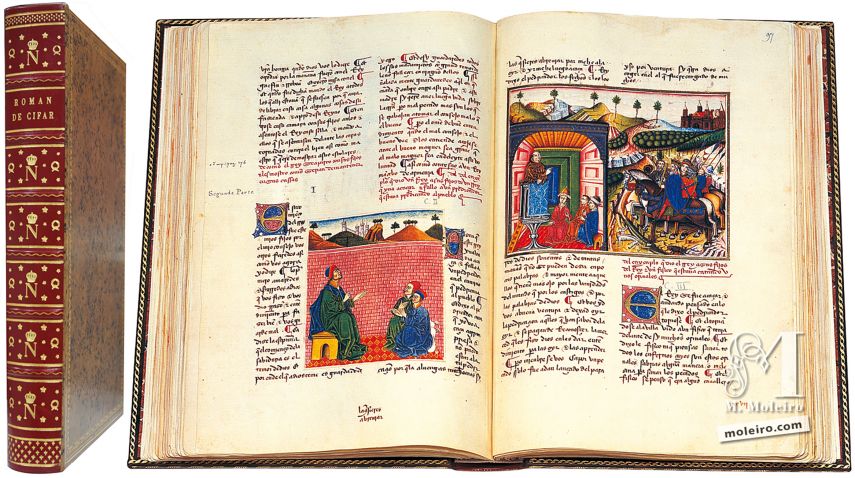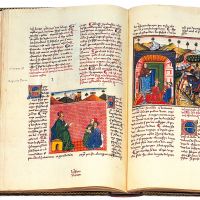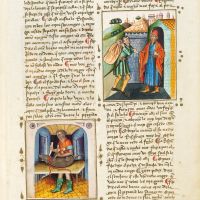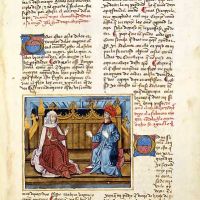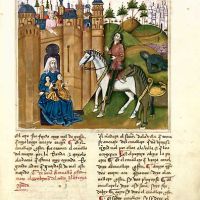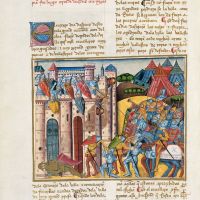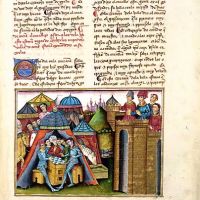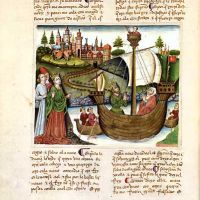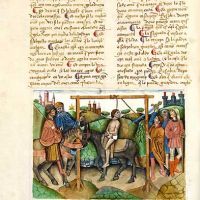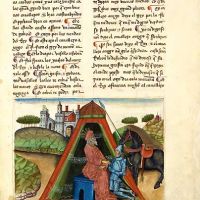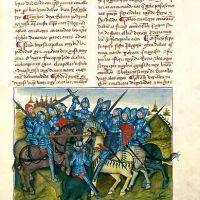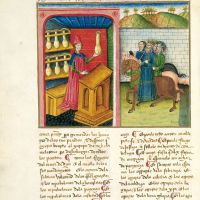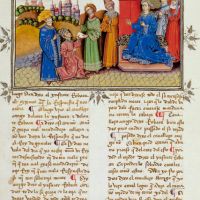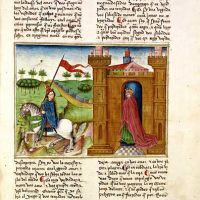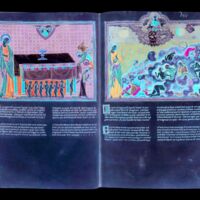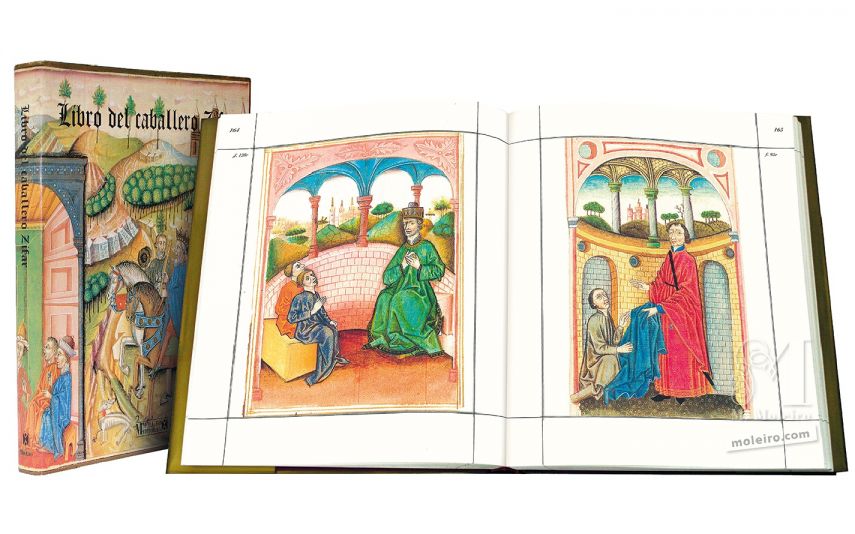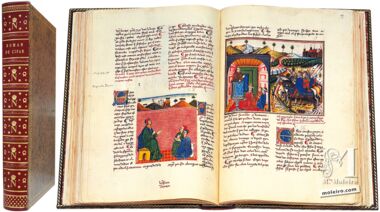The Romance of the Knight Zifar tells the story of Zifar and his family following their departure from the kingdom of Tarta hounded by misfortune. On their journey in search of a brighter future, God puts him to the test many times but Zifar accepts his misfortune with Christian resignation. Accompanied by a clever rogue, he sets off for Mentón, a kingdom at war with invaders, and proves himself to be such a fine general that he defeats the enemy and is proclaimed king. The wife and children who had gone missing many years before then reappear. Just when the tale seems to end a new part of the story begins. His younger son, Roboán, not content with being the second son, asks his father for permission to seek new opportunities as he had done in other parts of the world. Zifar agrees but first he speaks to his children at length about their behaviour in the world, how they should treat others and defend the Church, impart justice etc. Roboán sets off on his adventure and applies his father’s teaching so well that he becomes the emperor of Tigrida. Only then does he agree to marry Queen Seringa, who had offered him a kingdom like his father’s.
Not only does this codex tell a fascinating tale but the history of the manuscript itself is remarkable too, revealing the type of social circles likely to appreciate such a beautiful codex. Behind the adventures told in the Book of Zifar the Knight lies a perfect handbook for educating princes, hence it is no surprise that it always features on their bookshelves. A copy of it was specially made for the library of Henry IV of Castile, hence its opulent lavishness. Upon his death it entered the library of Isabel I, where it formed part of the queen’s personal treasury. In 1526 the library of Margaret of Austria was its home and shortly afterwards, in 1565, that of Mary of Hungary, the sister of Emperor Charles V. From there it travelled to the library of the Duke of Burgundy where the records show that it remained until the late 18th century. In 1796 it arrived in Paris where Napoleon admired it and incorporated it into the Bibliothèque Impériale where it still remains, in the present-day Bibliothèque nationale de France.
The Romance of the Knight Zifar is a truly exceptional book and a rarity in the context of the Castile of the first three quarters of the 15th century, a time when so little interest was shown in illuminated manuscripts and even less those on non-religious themes. The workshop commissioned to produce the manuscript was that of the finest court artists, the brothers Juan and Pedro Carrión, who were familiar with the most revolutionary techniques that had just arrived from Flanders. Under their guidance a skilled team of miniaturists produced all the illustrations in the book, all differentiated and identified by the formal characteristics of their style. The miniatures reflect the reality of their epoch with a precision that no historian could ever have matched. As a result, the dress of men and women clearly reveals the different fashions worn in Castile when the codex was made, and likewise, the military world, the inside of houses, etc. Everything appears before our eyes with the magic of what was commonplace in its time but is now difficult for us to understand.
The first chivalresque novel, comparable and prior to Miguel Cervantes’ Don Quijote. Written in Spanish c. 1304 by Ferrán Martínez, archdeacon of Madrid, canon of Toledo, notary, scrivener and seal bearer of kings Alfonso X the Wise and Sancho IV.
